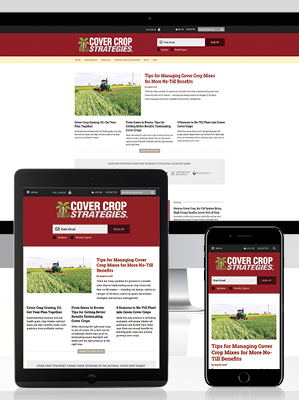Interest in cover crops continues to grow alongside the emphasis on nutrient loss reduction.
The last U.S. Census of Agriculture, released every five years, reported 18 million acres of cover crops across the United States, which is about 17% more (1.6 million acres) than the 2017 Census.
As a comparison, the 2017 Census reported 15.4 acres, which was about 50% more (5.1 million acres) than the 10.3 acres reported in the 2012 Census.
In Illinois, the 2022 Census reported 0.88 million acres of cover crops on cropland — a slight increase from the 0.71 million acres reported in the 2017 Census.
The practice has numerous potential benefits, including reducing soil erosion, suppressing weeds and diseases, recycling nutrients, reducing nitrogen and phosphorus losses, increasing organic material time and improving soil quality.
Giovani Preza-Fontes, field crops Extension agronomist and assistant professor at the University of Illinois, said farmers should consider cover crops because of the Nutrient Loss Reduction Strategy.
The NLRS was released in 2015 in response to the EPA Hypoxia Task Force 2008 Action Plan, which called for states in the Mississippi River Basin to develop state-level strategies for reducing nutrient losses from agricultural fields. The Illinois NLRS has a long-term goal to reduce nitrogen and phosphorus losses by 45%.
Among the in-field recommended practices to achieve these goals, the use of cover crops shows great promise, Giovani Preza-Fontes said, with an average 30% reduction in nitrogen losses and 30-50% reduction in phosphorus.
Justin Fruechte, product expert at Renovo Seed, said the company sells 1,200 species, including native grasses.
“Year over year we continue to sell more and their popularity has increased in the last 12 years,” he said.
The five most popular are cereal rye, oats, radishes, turnips and crimson clover.v
“A popular rotation that fits best is after corn or before soybeans,” he said.
Fruechte said cereal rye is popular because it overwinters and suppresses weed problems in soybeans.
Fruechte said that cover crops are being used more in mainstream agriculture and their use has moved eastward across the United States into southern Iowa, Illinois, Indiana and Ohio.
In the Dakotas, there has been increased use of cover crops after small grain rotation or forage which has cut livestock feed costs, he said.
“It works so well ahead of soybeans and allows them to continue to grow,” he said.
Fruechte said the practice is key to sustainable agriculture.
“Growing healthy food, you have to have healthy soil and roots so that your crops can continue to grow,” he said.




